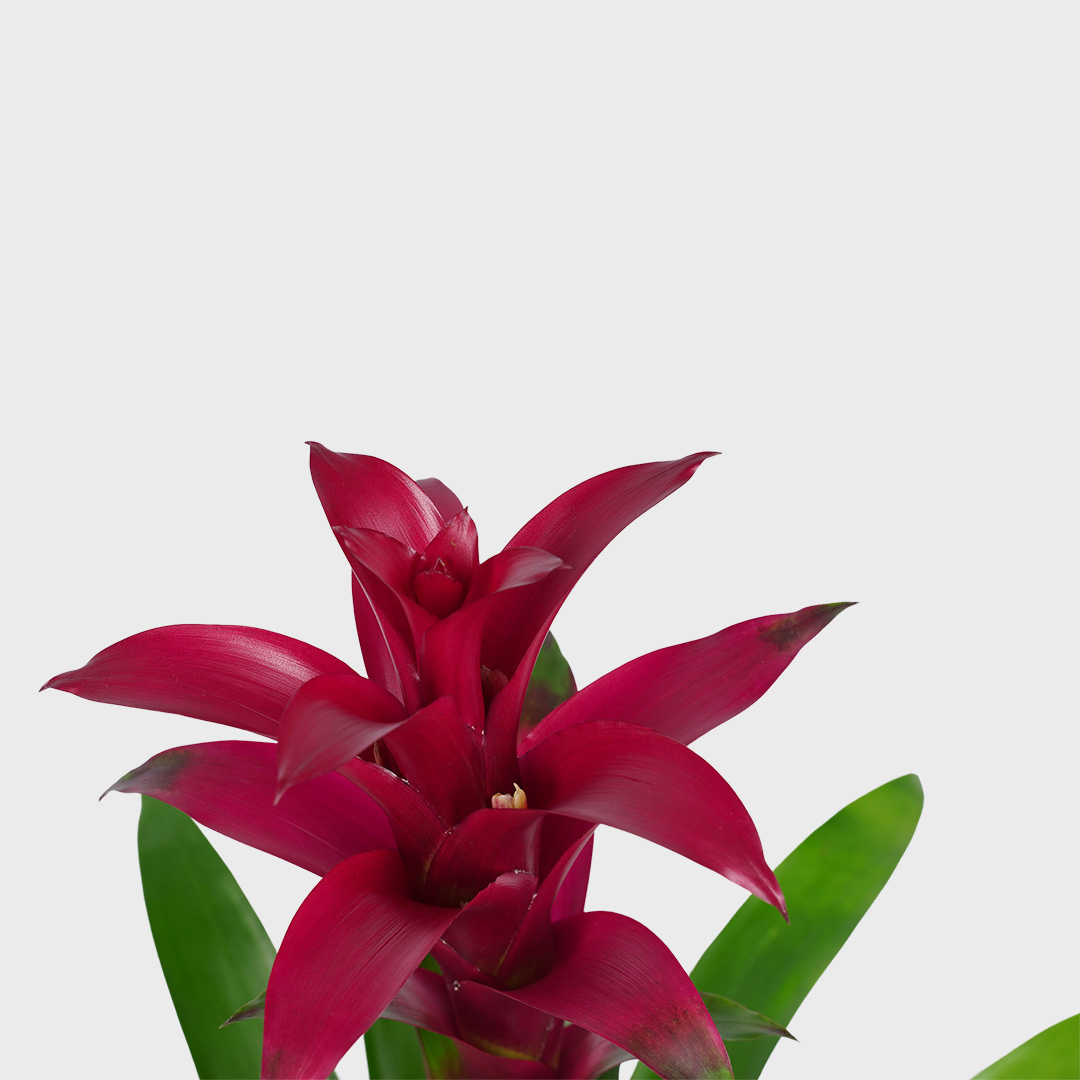
Deliver to
France
 English
English

The Bromeliad comes from a large group of flowering plants. There are a thousand different species. Bromeliads originate from South and Central America, but also in the Caribbean. Thanks to its flowers Bromeliads add tropical vibes to indoor spaces. They have a central cup at their base, formed by a rosette of long, stiff, spiny leaves.
Medium light
Water once a week
Non-Toxic
Air-purifying
Bromeliads adores light. Bright, indirect light is ideal for its growth. You can place it in front of an east- or west-facing window or at least 2 meters away from a south-facing window. If the Bromeliad gets too much light, the leaves will turn dark green or will be elongated.
Water the Bromeliad once every week by filling the cup with water. This is enough to quench the entire plant’s thirst. However, never allow the plant to sit in water for too long because it may result in root rot and build-up salts. It is best to water the Bromeliad every 5 days in summer, and every 10 days in winter.
Plant nutrition is not necessary for Bromeliads. Bromeliads have a short life span and therefore only need the nutrients in the potting soil.
It is only necessary to repot the Bromelia if it is a specie with a longer lifespan. Most Bromeliads die as soon as their fruit has finished flowering.
Repotting the Bromeliad is necessary every year. Repotting the plant every year gives it new nutrients and more room for root growth. The airier soil is also very good for the water flowing through. The best period to repot is spring.
The ideal temperature for Bromeliads generally is between 15 to 27 degrees Celsius. They thrive in warm and tropical climates similar to their natural habitat. It's important to avoid exposing Bromeliads to temperatures below 10 degrees Celsius as they are sensitive to cold temperatures.
Pruning is not typically necessary for Bromeliads, as they have a short lifespan. Bromeliads often have a short lifespan and will naturally decline and die back over time.
If the air is too dry, the Bromeliad can suffer from spider mites. To prevent spider mites, it is best to use the plant sprayer once a week. Spider mites are an infection of mites on plants. You can recognise the infection by infected leaves and a kind of cobwebs. If you have come across spider mites, it is best to place the plant outside. Wind and moisture from outside will quickly keep the spider mite away.


Once the Bromeliad has finished flowering, the plant will produce a shoot. Allow this shoot to grow to a size of at least 10 cm. Water the shoot via the calyx, and when it is large enough, you can propagate it.
If the Bromelia doesn't bloom, it is important to provide an optiomal environment. Place the plant on a location with plenty of indirect sunlight. Also make sure that you water the plant via the tube/cone.
A Bromelia can't be placed in full sunlight. The leaves will soon burn. If the leaves burn, make sure you give the plant less sunlight.
Yes, you certainly can. Check out our tips on how to propagate the Bromeliad.